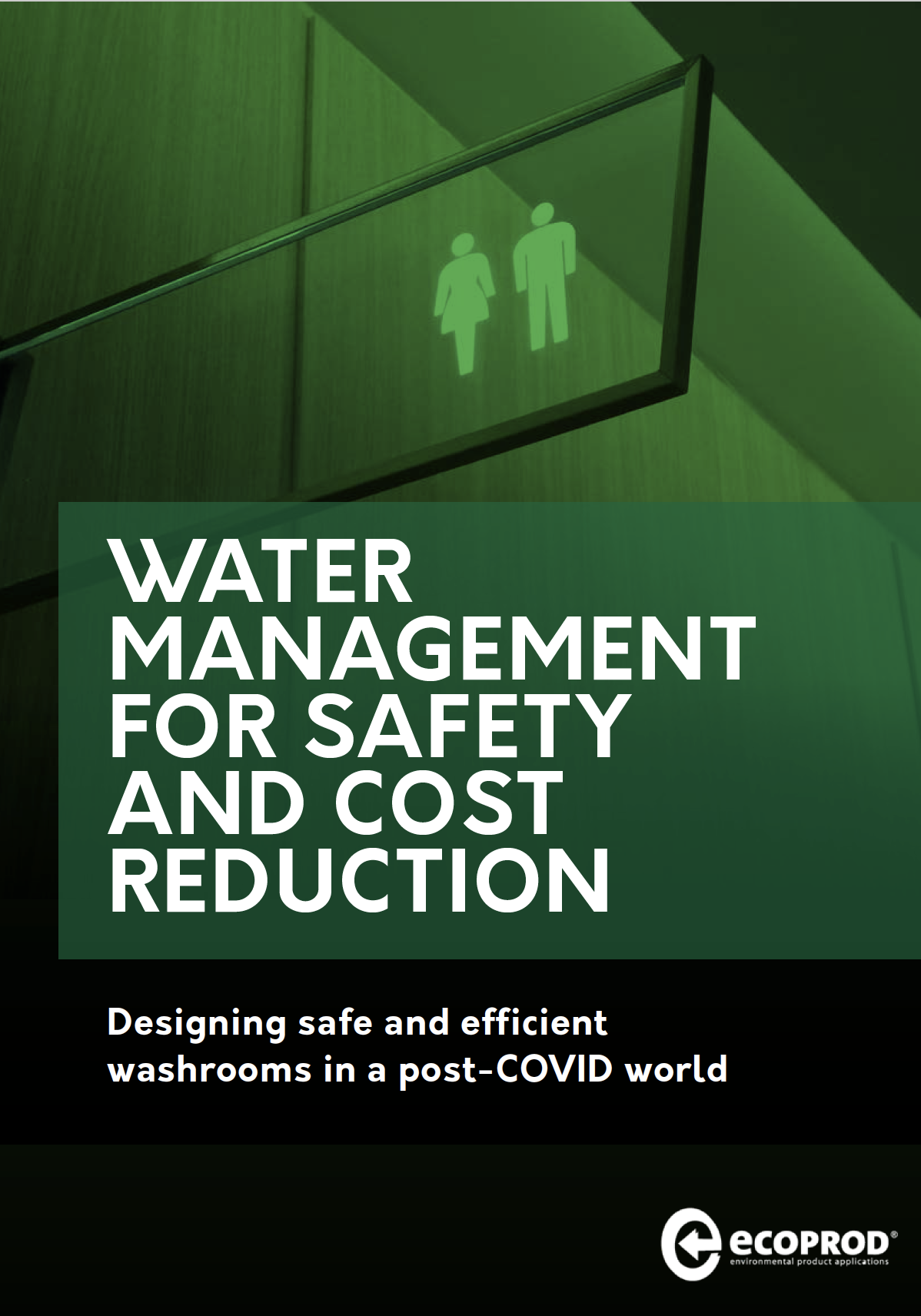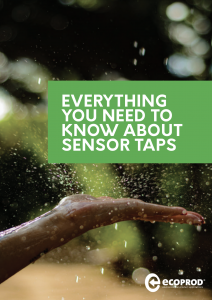Sensor taps have become increasingly popular options for commercial washrooms in recent years, particularly with an enhanced focus on hygiene since the COVID 19 pandemic. Sensor taps offer convenience, efficiency, and hygiene. However, some organisations are still reluctant to install them, generally as a result of some common misconceptions and myths. In this blog post, we aim to debunk these myths and shed more light on the true benefits of sensor taps.
Myth one – sensor taps are wasteful
One common misconception is that sensor taps waste water. Some people believe that they remain on for longer than necessary, causing unnecessary water usage. In reality, sensor taps are designed to be highly efficient. They often have preset timers or infrared sensors that detect when hands are beneath the faucet. This means that water flows only when needed and stops automatically, reducing the risk of leaving the tap running accidentally. When used correctly, sensor taps use much less water than traditional taps where it’s easier to forget to turn off the flow. For example, our CONTI+ range of taps typically use 70% less water than traditional hand operated taps.
Myth two – sensor taps are unreliable or prone to malfunctioning
Many people’s experience of sensor taps is in commercial buildings such as service stations, shopping centres and cinemas, where we’ve all had the experience of waving our soapy hands under a sensor taps and wondering why no water comes out. That’s because the products installed in these locations tend to be of fairly poor quality and are often badly installed, giving a very poor impression of what’s actually possible with sensor tap technology.
It’s true that like any electronic device, sensor taps can experience technical issues. However, modern advancements in sensor technology mean that the latest sensor taps are typically far more reliable than traditional taps. Sensor taps are designed to be durable and resistant to common plumbing problems such as leaks and drips. As with any product, correct maintenance is important to ensure no problems arise. Modern sensor taps are designed to make maintenance as easy as possible. For example, with the CONTI+ Ultra you can access all working parts from above, making maintenance simple!
Myth three – sensor taps are difficult to install
In fact CONTI+ sensor taps are extremely easy to install, no special skills are required other than connecting a hot and cold water supply. A retro fit to remove and replace existing traditional taps can be completed with ease. No requirement for mains electricity is necessary as many of the CONTI+ faucets are available as a battery version with an extraordinary 4 year life expectancy on the batteries due to its unique and patented technology (based on a user turning the tap on up to 150 times a day).
Myth four – sensor taps are only suitable for commercial environments
Whilst it’s probably fair to say that most of the sensor taps we install are fitted into commercial washrooms or other organisational environments such as dental surgeries, hospitals or veterinary practices, that doesn’t mean that sensor taps aren’t a great option for homes as well. We have written before on this blog about the many advantages that sensor taps offer within a domestic environment.
Myth five – sensor taps turn on and off at the wrong times
Some people think that sensor taps are frustrating because they may not always activate when needed or deactivate too quickly. While early sensor tap models may have had sensitivity issues, newer models are generally well-calibrated to detect motion accurately. Similarly they can be calibrated to take into account the position of mirrors in the bathroom and the range setting can be configured so that only movement in the immediate vicinity of the sink will set them off. Modern taps also offer a cleaner setting which enables the taps to be deactivated for a set period of time whilst the cleaners are in operation in order to avoid the taps being continually triggered during the cleaning process.
To ensure convenience, it’s crucial to install the sensor tap correctly, taking into account factors like sensor placement and sensitivity adjustments. With the right setup, sensor taps can provide a more convenient and hands-free experience compared to traditional taps.













 For the last 8 years Robert Summer – Head of International Sales and Marketing – has developed structured distribution network worldwide for CONTI+ brand. The products offer great benefit for washrooms and shower rooms for public, semi-public and health sector. Today, sustainability, hygiene and smartness are key to CONTI+ solutions. Robert lives the brand and its USPs and loves to support and motivate his team on a daily basis.
For the last 8 years Robert Summer – Head of International Sales and Marketing – has developed structured distribution network worldwide for CONTI+ brand. The products offer great benefit for washrooms and shower rooms for public, semi-public and health sector. Today, sustainability, hygiene and smartness are key to CONTI+ solutions. Robert lives the brand and its USPs and loves to support and motivate his team on a daily basis.











Comments are closed.